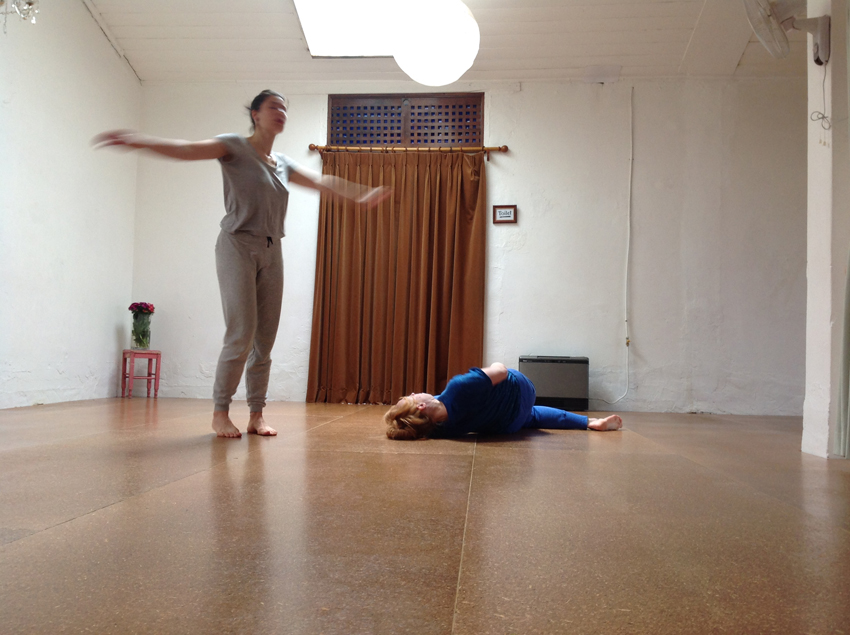 This series of sessions explored the impact of having both vision and hearing occluded during dance movement. Both eyes were covered with dark patches and the ears with sound cancelling earphones. The dancers expressed an initial discomfort as they adapted to the conditions. They reported feeling that their movements were more confined and restricted and expressed a sense of being “locked in”. Of particular interest was the observation that their movement was continuous with no pauses, suggesting the main focus was using movement to explore the space physically. This was supported by comments such as “I need to put myself everywhere to explore all facets of the space”. Tactile discrimination became the most dominant sense. Both dancers reported that their sense of balance was not affected and that one’s body against the ground was the key reference point. Movement was described as being “dense and continuous”.
This series of sessions explored the impact of having both vision and hearing occluded during dance movement. Both eyes were covered with dark patches and the ears with sound cancelling earphones. The dancers expressed an initial discomfort as they adapted to the conditions. They reported feeling that their movements were more confined and restricted and expressed a sense of being “locked in”. Of particular interest was the observation that their movement was continuous with no pauses, suggesting the main focus was using movement to explore the space physically. This was supported by comments such as “I need to put myself everywhere to explore all facets of the space”. Tactile discrimination became the most dominant sense. Both dancers reported that their sense of balance was not affected and that one’s body against the ground was the key reference point. Movement was described as being “dense and continuous”.
– Shelley Lasica
Dancers: Deanne Butterworth, Jo Lloyd
Choreographer: Shelley Lasica
Researcher: Fleur O’Hare, Centre for Eye Research Australia
